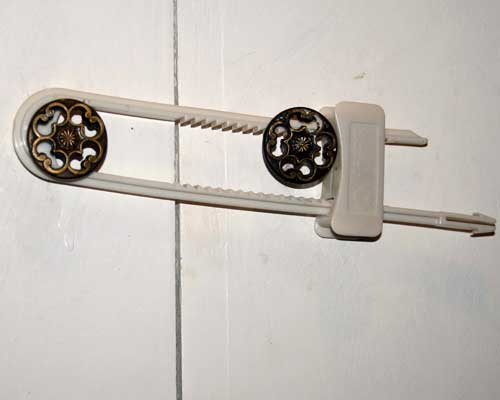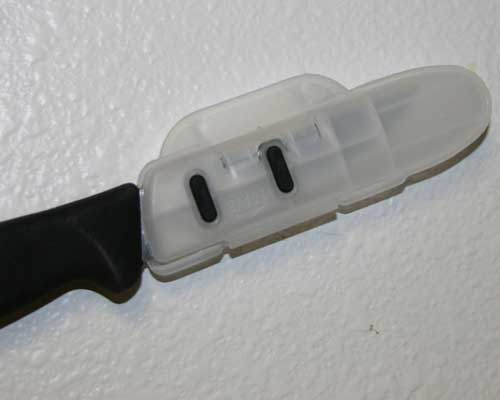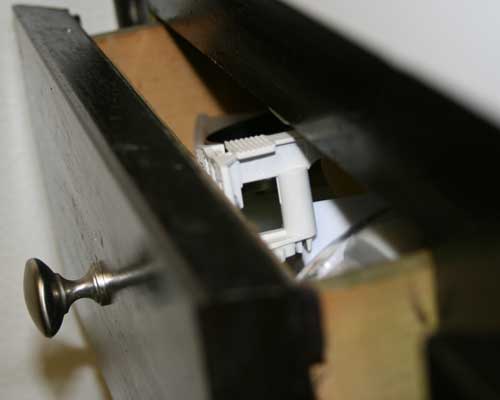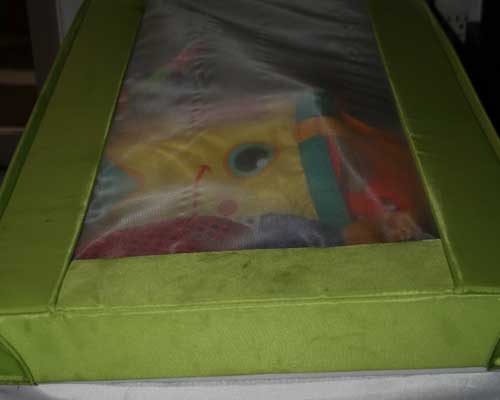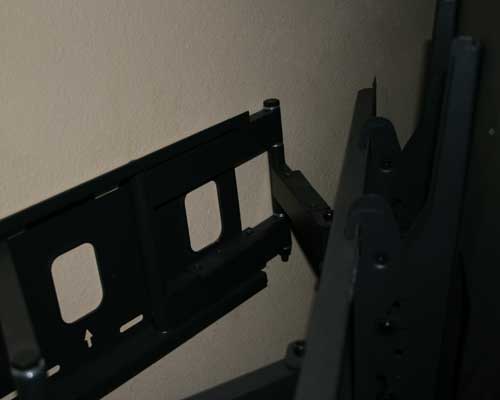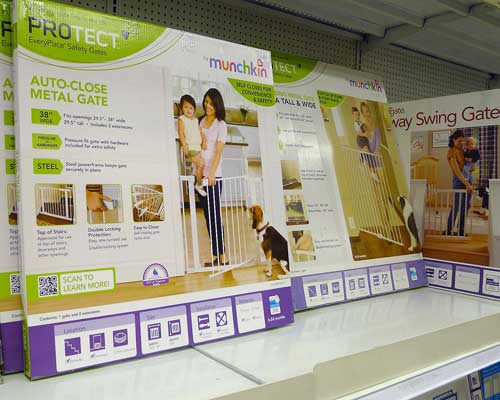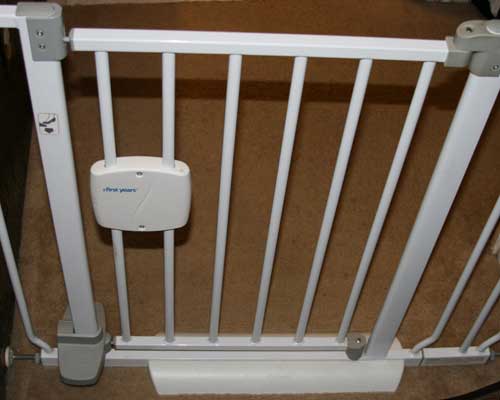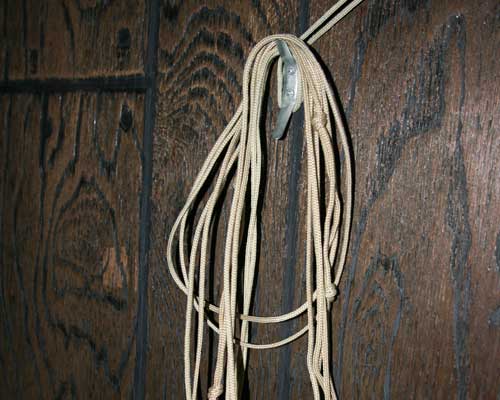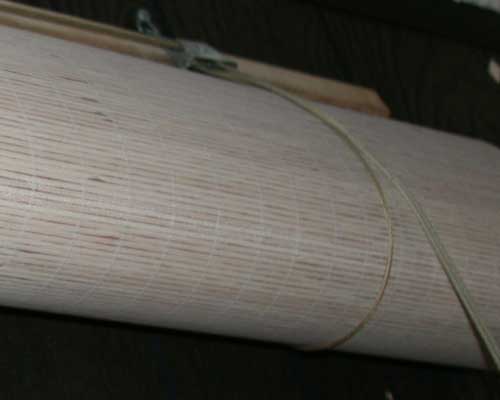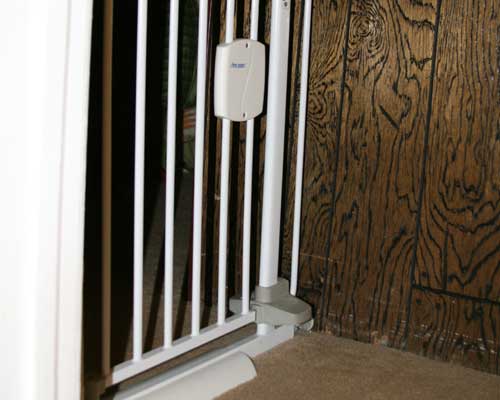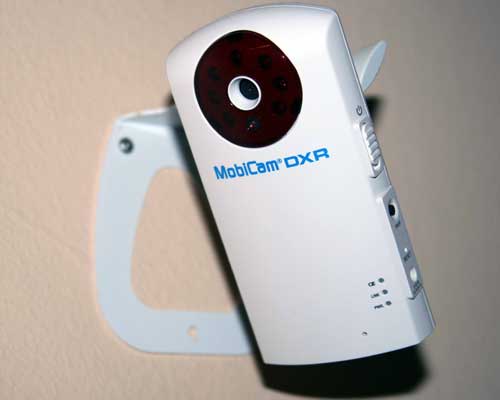Use this home childproofing checklist as a guide to learning the many safety considerations you need to make in your house for the baby.
First Aid
In most emergency situations there is a strong possibility that you will be the one who is next to your baby and be able to save his or her life. Therefore it is best if you have been trained in CPR and especially infant CPR. Classes for infant CPR can be found easily and are usually offered by multiple organizations in your neighborhood. Knowing how to rescue a choking baby and administer infant CPR can make all the difference in an emergency situation. Also knowing simple first aid for bumps and bruises will be something you will need to know when you have a young child. Have the proper emergency first aid kit on hand at all times and replace used items so that you always have a complete set. Keep a first aid kit in your home and in your car.
Baby Bathing Safety
Safety in the bath tub is very important because the possibility of drowning is not something that should be taken lightly. A baby can drown in an inch of water so it is imperative that you never leave your baby alone in the bath tub for even a second. You only need a couple of inches (2-3 inches) of water so that the baby’s legs are covered. The temperature of the water should be warm. Do not use hot water. Test the water with a thermometer and you hand to make sure the water is not above 100 degrees Fahrenheit.
Bath tubs, bathroom tile and bathroom fixtures are very hard surfaces that can be dangerous if the baby falls and hits his or her head. Prevent the chance of falling with your baby by using non-slip mats inside the bathtub and on the flooring in the bathroom. To help keep baby in one place consider using a bathtub ring for the baby to sit in.
All bathroom cabinets and drawers should be latched so your baby is unable to open them. The medicine cabinet should not only be out of reach but should be locked at all times as a climbing toddler may be able to get into a cabinet that seemed out of reach.
Many baby safety items are made for the bathroom and can be useful to help reduce the risk of injury. For instance, the bathtub faucet soft cover can prevent an injury, and they often come in cute, decorative themes like animals that can spice-up bath time for your little one. Additional covers for bathtub knobs are also helpful, but not absolutely necessary.
Toilet safety is an important thing to consider. Babies have drowned in toilets so it is highly recommended that your purchase and install a toilet latch that keeps the toilet seat from being opened by a baby.
Electric devices like hair dryers should never be used when your child is in the bath. Unplug and safely store hair dryers, curling irons and other electrical appliances when they are not being used. Outlets should have the reset button on them if they are in the bathroom according to home code and these ground fault circuit interrupters can help prevent getting electrocuted.
Keep soap, razors and other bathroom toiletries out of the reach of children
Baby Kitchen Safety
Safety in the kitchen focuses on preventing babies from getting burned and injuring themselves on the many dangerous items found in the kitchen. The kitchen is often the focal point of the home and children often spend a great deal of time in the kitchen so it is especially important to make sure that your baby is in a safe kitchen.
The first thing to understand is that keeping hot food and hot drinks away from the baby is a must. Never leave hot items near the edge of the counter or the edge of the table as burns can be easily prevented if the baby can not reach things that are hot. Additionally, do not carry your baby and something hot at the same time. Put the baby down in a safe place like the high-chair before you start cooking and before you move hot items around the kitchen. The stove is one of the most dangerous items in a house for a baby so never cook while holding a baby and prevent accidents by putting an appliance latch on the oven door to keep it locked. If possible while cooking on the stove use the back burners and turn the handles of the pots and pans you are using towards the back of the stove.
Baby safety items that are sold in stores for the kitchen include plastic stove guards that act as a barrier to the burners and stove knob covers that block the stove from being turned on by a child. Refrigerator locks that keep the refrigerator door from being opened by a baby. Cabinet and drawer locks that block the ability for a child to open a cabinet or drawer.
Place dangerous items like kitchen cleaners high up in the air inside a cabinet so they are completely out of reach of a baby and a toddler and if possible lock that cabinet. Pointy items can be especially dangerous as a child can inadvertently poke an eye causing a severe injury.
Knives in the kitchen can be a serious danger to a baby. Store knives and scissors high up in a cabinet or place that is way out of reach for a child. Consider buying knife covers that encase the knife. Hopefully this never happens, but if baby should ever get a hold of a knife he or she will have to spend time removing the cover before they can hurt themselves, this time can give the parent a chance to save the child before tragedy strikes. One of the most dangerous household items for a baby is a knife. Kitchen knives, fishing knives, hunting knives and pocket knives must be kept and stored out of reach of children at all times. Knives should be locked up if at all possible or removed from the home altogether.
Reorganize your storage areas in the kitchen so that all dangerous items that are sharp, glass, utensils, cleaning products and items that can be a choking hazard to the higher up cabinets and drawers that will not be reachable for a young child. Use locks on all cabinets and drawers that have potentially dangerous items inside.
Coffee makers, waffle makers, counter top grills and the outside of the oven can get hot and stay hot for a period of time even after being shut off. Be careful with things like these that are hot because they can cause severe burns. Use the back burners of the stove when you are cooking.
Lock the dishwasher and install appliance latches on the refrigerator and stove.
Sponges should be kept out of reach. If something spills it could cause a slippery situation so clean it up right away. Garbage and recycling is best to be kept in a locked cabinet so your child does not go rummaging through them.
Diaper Changing Table Safety
You will spend a lot of time changing your baby’s diaper during the first several months of his or her life. The changing table can help make diaper changes easier but changing tables pose a serious risk of injury to a baby if he or she were to fall off. Changing table safety begins with the idea you should never leave your baby unsupervised on the changing table even for a second. If you need to get something, pick up your baby and take your baby with you so your baby is never left alone. Make your life a little easier by keeping a well stocked assortment of baby changing toiletries within your reach while at the changing station, but keep those items out of reach of the baby. Safety straps should be used to make sure your baby does not fall off the changing table.
Crib Safety for Baby
Cribs can be one of the safest places for baby to spend time and sleep if proper precautions are implemented. Never use soft bedding materials like pillows or blankets in the crib when baby is sleeping. These things can suffocate a sleeping baby if they block the baby’s mouth and nose. Crib bumpers are widely sold in stores but are a major safety risk and it is best to simply not use crib bumpers at all. Toys and stuffed animals should not be placed inside the crib while baby is sleeping because these too can cause a major safety risk.
A sturdy crib is important and avoid the type of cribs that have drop-sides, if you do use a drop side crib keep the drop side up and locked whenever you are not in the room.
Hanging toys and mobiles are popular for infant babies to keep them entertained, but these items must be completely removed from the crib as soon as the baby can get up onto his or her hands and knees.
When baby is able to pull themselves up into a standing position it is very important that the mattress be lowered to the lowest possible position in order to keep baby from climbing out of the crib and falling. Generally one year old babies are not tall enough or have the climbing abilities yet to fall out of the crib, but it possibly can happen so put the mattress in its lowest position. Anything like a blanket or toy that is in a crib can be used as a step for the baby so remove items.
When a child is 35 inches tall it is usually about time to stop using the crib and start using a bed for the baby. When you do make the switch from crib to bed
Consider moving child from crib to bed when he’s 35 inches tall often about the age of 2.5 to 3 years old. Falling out of the bed can be a very dangerous thing to happen to a baby so prevent falls by using a detachable rail and consider putting soft padding on the floor like a plush rug or exercise mat. Many moms and dads choose to put the crib mattress on the floor and use that as the child’s bed.
Never place a crib next to a window, furniture, radiator, heating vent or floor lamp. Items outside of the crib should be kept far enough away from the crib that baby can not reach them.
Toddlers should not use a bunk bead. Toddler beds should have two feet high safety rails installed on both sides. Keep the bed several feet from windows and away from furniture and lamps.
Toy Chests
Open shelves and open bins are usually considered safer for toy storage. If you choose to use a toy chest get one that has a lightweight lift-off lid or a safety-hinged lid that does not quickly snap close when released. It is best to remove the lid completely of older toy chests that do not have safe lids. Put padding on hard corners to prevent bumps and bruises. As a safety precaution, if there are no air holes inside the toy chest already, drill several holes in the toy chest for breathing if a child playing around the chest should accidentally fall inside and become trapped.
Electrical Outlets and Cords
Electrical outlets can be a serious danger to a baby who can easily be electrocuted if the baby sticks things into an outlet. Avoid issues by placing outlet safety plugs into the outlet or using an outlet cover. Some covers are made that allow an outlet to be used and the appliance cord to come out from the cover but restrict access to where the plug actually plugs in. You can block unused outlets with furniture as well. Furniture works well for hiding cords. Be especially focused on hiding cords around television and computer equipment as many cords will be in use in these locations. Exposed cords can be tempting for a child to pull on causing a lamp or computer to fall dangerously.
Cover outlets to prevent your curious child from sticking his fingers or something else inside. Outlet plugs can be choking hazards so opt for removable caps that cover both outlets.
Appliances
Appliances need to be kept out of reach of the baby at all times. It is a good idea to unplug many appliances between use like toasters, hair blow-dryers, electric kitchen tools and vacuums. You can store these occasionally used appliances in cabinets or closets to help with appliance safety around children.
Refrigerators, microwaves, wine refrigerators, ovens and other appliances need to be secured. Refrigerator latches work well. Electronic equipment such as DVD players, CD players, cable boxes, routers and wires need to be taken account for when going through your home safety checklist. Wire covers, locked cabinets and other items can help keep your baby safely away from the electronics.
Flat-screen televisions must be anchored to the wall in order to prevent one from falling on a child. Furniture that is tall and furniture that can topple must be secured to the wall. Remember children love to climb so make sure all dressers, bookshelves, TV stands and flower stands are not able to fall over by securing them to the wall.
img src=”https://babygirlboy.com/images/stories/baby/screw-furniture-to-wall-studs.jpg” width=”500″ height=”400″ alt=”Screw Furniture to Wall Studs” title=”Screw Furniture to Wall Studs” class=”caption” />
Door Safety for Babies
Most injuries involving doors for babies involve fingers, hands or feet getting hurt when a door is closed on them. You can prevent door slamming on fingers by using door holders and doorstops. Door holders can be purchased that keep the door open which prevents fingers from getting slammed.
Make sure doors are properly secured and locked so that a child does not open a door to a dangerous place like the outside or the bathroom. At all times, keep all exterior doors, sliding doors and screen doors locked.
Put decals on large, glass doors that baby or adults could mistake as an opening and then walk right into them.
Preventing Falls
In order to prevent a baby from falling a parent needs to anticipate situations that can be dangerous. Do not leave your baby by himself or herself when the baby is elevated off the ground in places like a couch, bed, highchair, or changing station.
When putting your baby in a shopping cart at the store or using a restaurant high chair, use the safety strap to prevent baby from falling out.
Homes have windows in them that can be extremely dangerous if a child were to fall out so to prevent this from happening keep your child away from open windows, do not place furniture near windows and strongly consider using window stops and window guards. Children enjoy looking out the window so the best method to ensure your baby is safe is to use window guards that attach to the window frame. The bars must not be more than four inches apart. For windows that open up and down (double hung) you could instead place a locking device that keeps the lower window from opening more than four inches. Very important, you must be able to escape the room in case of a fire or other emergency so take that into account when securing your windows.
Safety netting is also available for windows, landings, porches and decks. Decks and porches with railings that are more than four inches apart must be altered because it is very dangerous as a baby may be able to crawl through or get stuck between the railings. Using plexi-glass or plastic lattice to cover the railings may not look as nice, but the safety of your child is the first priority. A temporary safety wall which you can buy at a child safety store can be put along the balcony or stairway on railings that are too far part.
Balconies and railings can be a falling hazard so make sure that every single upright post is secure and not loose. Make sure the space between them is no more than four inches apart for infants and no more than five inches apart for toddlers.
Gates are also useful to keep a baby away from steps inside the home and should be used at the bottom and the top of the stairwell. Carpeted stairs can improve footing and keeping the stairwell free of toys and other stuff that can trip a child.
Window blinds have cords that can entangle a child and strangle the child so prevent this by tying up cords on wall hooks, using cord stops and cutting window blind cords that are looped. The best practice is to use cordless window coverings on all the windows in your home. Do not place furniture, cribs, large toys or beds near window blinds that have cords.
Fireplace and Fire Safety
A fireplace in the home can be a danger to a baby but risks can be reduced by taking the proper safety precautions and that starts with making sure you have smoke detectors and carbon monoxide detectors throughout your home – and check/replace the batteries on them monthly.
Fireplace grills should be properly installed and it should be used whenever a fire is lit. Keep fire related stuff out of reach including logs, matches, tools, and the gas keys
Make sure everyone in your household knows the escape route and consider getting a ladder that can be used to escape from a second floor window if you live in a multi-floor home. An out of reach, but accessible fire extinguisher should be in every home.
Off Limit Areas
Areas like the kitchen that can be unsafe for many reasons should be blocked off by using a safety gate and door locks. Baby safety manufacturers have produced all sorts of door locks, drawer stops, knob covers, latches, and many other specialized locks that can prevent access to any drawer, cabinet, closet, room or stair in the home. An alternative is to install a lock that is placed very high up on the door or to use baby gates to keep children from entering unsafe areas of the house.
The office, kitchen and bathroom are some of the most dangerous rooms in the house. Seal off these rooms by using plastic door knob covers that make it very difficult to turn and open the doors. You can also
Tablecloths and place mats are not a good idea because a baby will usually grab and pull on them which can cause everything on top to spill and break.
Buy a trash that is child-resistant because of a good locking mechanism, or put the trash can in a cabinet that is locked. Garbage bags and other plastic bags should be stored out of reach of children as they are a choking hazard.
Ashtrays must be placed way out of reach of children who may put ashes in their mouths. The dangers of smoking makes it wise to never smoke in your home or around you child.
Floor heaters, radiators and fans need to be placed in areas of the home that are inaccessible to the baby.
Furniture Safe
Heavy furniture should be bracketed to the wall and this includes all entertainment centers, dressers, bookcases, shelves, water coolers, televisions etc. Safety straps, L-brackets, screws, and specially designed heavy duty Velcro can be used to secure furniture and keep them from falling on top of baby. Keep heavy items stored at the bottom of furniture to keep it from getting top heavy and unstable. Never put items that can interest a child on top of a cabinet or a high shelf because your toddler may want to try and climb up to get it.
Babies are known to bump and fall into furniture causing injuries and cuts. You can help soften the blow and prevent injuries by actively protecting the furniture. Cushioned guards can connect to edges and corners. Any heavy objects should not be placed high up on tables or shelves as the pose a falling risk. Tall lamps are infamous from getting toppled over by children and they usually have heavy, glass lamps at the top that can be extremely dangerous should they fall and hit a child. If you can not replace these lamps with something more secure, consider placing it behind furniture and securing it to the floor and wall. Organize the space around furniture so there is nothing a child could trip on causing them to fall into a piece of furniture.
Unstable furniture and furnishings should be stored away as they can topple over when a not yet sure footed child leans on it or a climber tries to climb. Heavier items should be stored lower on a piece of furniture to keep the furniture from getting top heavy and unstable. Always shut dresser drawers as open ones are tempting for climbers.
Loose knobs on cabinets and furniture should be fixed immediately as they can become a choking hazard should your baby put one in his or her mouth.
Area rugs should have nonskid backings and making runners or area rugs more slip resistant by using double sided tape can help.
Highchairs and Hook-on Chairs that Connect to Tables
Do not leave your baby unattended when using a highchair and always use a safety strap. Babies spend a lot of time in highchairs so investing in a good quality one is a great idea. Look for one that uses a safety strap and is well balanced so it will not fall over. If using a hook-on chair that connects to a table then make sure the table is sturdy and the hook-on chair is properly connected to the table. Place the highchair out of the high traffic area so there is less chance someone will bump into the chair.
When eating out at a restaurant make sure you inspect the high-chair that is provided by the business before putting your baby in it. Often you will find the locking waist strap is broken and you will need to get another high chair.
Sleeping Safety and SIDS Prevention
Babies should sleep on their backs whenever they are sleeping. During nap time and at night you should monitor that your baby is sleeping on his back and has not flipped over. A baby does not need a pillow to sleep and it is extremely dangerous for a baby to use a pillow as it can lead to suffocation. Other loose bedding and blankets are also dangerous, consider using a sleeping sack instead of any type of blanket or comforter. Soft beds and water beds are not recommended for babies as these too can be dangerous.
Baby Clothing Safety
Drawstrings are extremely dangerous so avoid baby clothes that have drawstrings. Use fire-resistant clothing materials for baby when they sleep. Snap-buttons are usually easier for changing and safer than zippers so consider snap-button clothing when shopping for baby clothes.
Safe Toys
Babies spend much of their time playing with toys so it is of paramount importance that those toys are safe. Make sure your baby is playing with age appropriate toys as a toy for 3+ years old could have dangerous parts for a child who is only a year old. An age appropriate toy will match the physical abilities of a child at that stage of their development. The toys your baby plays with should be well built and in good condition. If you have used toys or hand me down toys then you must carefully inspect them for any potential dangers. Before letting your child play with them use a baby safe cleaner to disinfect each toy. New toys often come in packaging that can be dangerous for a child so immediately dispose of the packaging when you open the box or package the toy comes in.
- Toys should not have any dangerous parts.
- Small magnets can be a choking hazard, these are commonly found on some refrigerator magnet toys like letters.
- Watch batteries for small electronic toys, if the battery is accessed by a baby and the baby swallows the battery it can be life threatening.
- No strings or plug-in cords longer than 12 inches since these can be a strangulation hazard if wrapped around a baby’s neck or circulation problems if wrapped around an arm or leg.
- Buttons, rope, ribbons, beads, eyes, stickers, small plastic parts, and detachable small pieces are serious choking hazards.
- Should be light enough that the weight of toy will not hurt the child if it fell and landed on the baby.
Baby Car Safety
A baby must use a car safety seat while being transported in a motor vehicle. Use the middle position of the back seat of the car to put the car seat. It is very important that you properly install the car seat in order for the baby to be properly protected. Keep the car seat in a rear facing position till the baby has turned two years of age or until the baby has reached the maximum height and weight limits for that particular car seat. Infant car seats must be used for newborn babies, so do not use a car seat designed for a toddler for an infant.
As a rule when you are transporting your baby drive carefully and responsibly.
Sun Exposure and Protect
A baby’s skin is very sensitive and can be damaged by sun exposure in a short period of time. Because of this, it is recommended to keep your baby away from direct sunlight and always avoid long sun exposure. Sunscreen that is designed for babies should be used every single time your baby is going to be outside. Additionally, protect the baby’s face from the sun by making him or her wear a hat. Use an umbrella when outside sitting and use the canopy of the stroller when on the move to block the sun’s rays from reaching the baby. Long sleeve shirts and pants can certainly help and it is best if the clothing is light colored.
Playground Safety
Playgrounds are very popular places to take your children but the fact is many children are injured everyday while using playgrounds. If visiting a playground make sure the structure your child is using is age appropriate, as some playgrounds are designed for toddlers while others are designed for much bigger children. Make sure the playground is in good working order and there are no broken parts. Watch out for bolts and screws that are loose on playground equipment as pieces that are not properly fastened together could easily come apart causing serious injuries. The flooring of a playground should be soft and made up of about a foot worth of soft materials such as rubber, wood chips, sand or fiber. Avoid playgrounds that use hard surfaces like concrete, asphalt or compact dirt and grass. If you have a playground at your home then you need to regularly inspect the parts to make sure everything is secure and safe for your child to play on. Teach your child to use each piece of playground equipment properly including not going up the slide and waiting his or her turn if there are other children playing. Major injuries can occur to a child if he or she were to fall from an opening in playground equipment, so be careful of openings where children can enter and exit the equipment and railings that have gaps that are spaced too far apart. Do not leave your child unsupervised at the playground.
Poison
Post the poison emergency number (800) 222-1222 near your phone and on the refrigerator alongside numbers for your pediatrician and hospital. Many poisons exist in a house and need to be properly stored away from baby’s reach. Make sure you get all the poisons as many products found throughout your home may be poisonous. Any cleaning product, medication, bathroom toiletries and paints are very dangerous to a child. Medicines are commonly carried in bags or purses so do not leave them laying around. Many accidents have happened when a pill case is carelessly placed by the sink or on a dresser within baby’s reach.
Plants that are toxic can cause severe problems so it is best to check all of your house plants against the plant safety list and get rid of any potentially dangerous house plant for baby.
Lead paint continues to be a major problem for children who are exposed to it often when the parents are not even aware of things in their home that can be exposing their family to lead. Many people are aware that older houses have often been painted with lead paint but many people are not aware that lead can be found in imported toys, older toys and furniture.
Gun Safety
Guns are one of the most dangerous items that some people have inside their homes. The best idea is to simply remove your guns from your home before the baby is born. Guns in the home and children can be a tragic combination so understand that having no gun is a safe gun. If you do keep guns in the home, then for maximum gun safety, keep all guns unloaded and placed inside a locked container that is designed for gun storage. To prevent deadly gun accidents, the locked container must be out of reach of children at all times and the gun ammunition should be kept in a different locked container that is also out of reach. Go beyond those gun safety guidelines by using trigger locks and other safety devices that are designed to stop an accidental discharge. Toy guns are commonly used by children so they do not always have a clear understanding on the dangers of real guns. Teach your child real guns are deadly weapons and are not toys.
This home childproofing checklist is not complete. It is also important to note that there are professional home childproofing services done by home childproofing experts that can assist you in finding and fixing potential hazards in your home. There are many other unique situations that a baby may encounter so keep a close eye on your baby to help make sure that bundle of joy stays safe.
Accidents are the Leading Cause of Death Among Children
Pediatricians put a large emphasis on educating parents about the importance of childproofing your home, using car seats properly and watching for hidden dangers. As you look at the childproofing checklist you can see that accidents can come in many different ways and make up the leading cause of death for children according to statistics. House fires, car accidents and drownings are the ones you usually hear about on the news, but other hidden dangers and child safety exist that you must be aware of to ensure your baby is safe.




